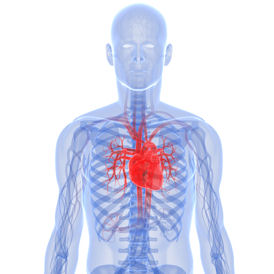Scientists discover ‘DIY repair mechanism’ in hearts
Scientists believe they are a major step closer to repairing the damage caused by a heart attack after discovering hearts contain their own “DIY” repair mechanism, writes Tom Clarke.

The finding, published today in the science journal Nature shows that cells in the hearts of mice can be coaxed into re-growing after injury.
It offers hope to the 750,000 people in Britain living with heart failure following a heart attack.
“To repair a damaged heart is one of the holy grails of heart research” said Jeremy Pearson, associate medical director of the British Heart Foundation which funded the study. “This groundbreaking study shows that heart cells, given the right stimulus, can mobilise and turn into new heart cells that might repair a damaged heart.”
Heart failure results from some of the heart muscle dying following a heart attack. It can leave sufferers feeling exhausted and short of breath carrying out normal everyday tasks like climbing stairs.
Many people with severe heart failure have only a 50 per cent chance of living for another five years.
The latest research only demonstrates a proof on principle – and in mice not humans. But that alone is a major step forward.
Until recently scientists believed that heart muscle, unlike other tissues in the body, was unable to repair itself. But researchers have since discovered a unique type of stem-like cell in the heart, called a progenitor cell, which can produce new blood vessels and heart muscle.
These cells are only active during the development of the heart in the embryo. But this new research shows that in adult mice, those cells can be switched back on again if they are given a molecule called Thymosin ?4.
“We’re targeting a cell type that had that potential which was in theory lost during birth and through to adulthood and we’re turning back the clock and giving these cells that potential back again,” said Prof Paul Riley, at the UCL Institute of Child Health in London, who led the research.
The researchers found that in mice with damaged hearts muscle Thymosin ?4 not only allowed heart muscle to re-grow, it improved the heart’s ability to pump blood.
“To activate these cells in humans might be a mechanism by which the heart can undergo DIY repair so it’s very important to translate these findings into humans” said Prof Riley.
Crucially however, in the mouse experiments the treatment only worked if the heart cells were “primed” with Thymosin ?4 before injury. If the molecule alone was to be used as a drug it would have to be given before a heart attack.
Researchers foresee a medicine based on Thymosin ?4 that could be given to people at high risk of a heart attack which might then ‘pre-programme’ their heart progenitor cells to become active and repair the heart in the event that they do have a heart attack.
However, Prof Riley and his team are now working with human heart cells grown in the laboratory to see if they can find a molecule better tailored to our hearts. The hope is they may find a suitable drug candidate that could activate heart progenitor cells without the need for priming first.